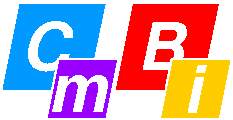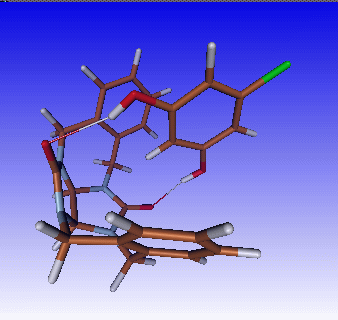 |
 |
||
 |
 |
||

 |
 |
SUMMARY:
Molden is a package for displaying Molecular Density from the Ab Initio packages GAMESS-UK , GAMESS-US and GAUSSIAN and the Semi-Empirical packages Mopac/Ampac, it also supports a number of other programs via the Molden Format. Molden reads all the required information from the GAMESS / GAUSSIAN outputfile. Molden is capable of displaying Molecular Orbitals, the electron density and the Molecular minus Atomic density. Either the spherically averaged atomic density or the oriented ground state atomic density can be subtracted for a number of standard basis sets. Molden supports contour plots, 3-d grid plots with hidden lines and a combination of both. It can write a variety of graphics instructions; postscript, XWindows, VRML, povray, OpenGL, tekronix4014, hpgl, hp2392 and Figure. Both Xwindows and OpenGL versions of Molden are also capable of importing and displaying of chemx, PDB, and a variety of mopac/ampac files and lots of other formats. Molden also can animate reaction paths and molecular vibrations. It can calculate and display the true or Multipole Derived Electrostatic Potential and atomic charges can be fitted to the Electrostatic Potential calculated on a Connolly surface. Molden also features an stand alone forcefield program ambfor, which can optimise geometries with the combined Amber (protein) and GAFF (small molecules) force fields. Atom typing can be done automatically and interactively from within Molden, as well as firing optimisation jobs. Molden has a powerful Z-matrix editor which give full control over the geometry and allows you to build molecules from scratch, including polypeptides. Molden was also submitted to the QCPE (dead?) (QCPE619), allthough the Xwindows version is considerably running behind on the current one.

Attend the Chemical Design &
Discovery Course which makes use of public domain softwares such as
Molden, Pharmer,Open3DQSAR and OpenBabel to teach you
Computational Drug Design.
molden7.3 is a version that will run on MacOSX (with a tweak)
molden7.2.1:
Inportant bug fix to molden7.2, effectively only the "economic" docking was available. Now in addition to the "economic", the "quality" docking is also possible.
molden7.2 introduces a stand alone docker.
Molden7.1 makes the docking code better. Now the test dockings number 11 cases.
Molden7.0 adds reading of ecce files of the nwchem package, version 7.0.0. This is the version distributed with the latest Ubuntu/Linux version. The single point energy calculations are not yet read correctly.
The docking code was extensively modified. Some bugs and some design flaws
were corrected. The test dockings (available in test/dock directory) have
been expanded with two more dockings: raloxifene into 7ndo and 2qxs.
Bringing the total of test dockings upto ten.
The Geometry Convergence window now contains a XMGR button that allows for the writing of a xmgr input file. xmgrace is the program to use with these files.
Molden6.9 fixes some bugs to the reading of the molden format files.
In addition it has now the final docking prototype, tested on eight
dockings .
Molden6.0 this is the final distribution before the CDD course. It fixes missing conformations from the conformational generator and increases the speed of the three docking scenarios. The third scenario has been sped up with nearly a factor two (from 15 minutes to 9 minutes).
Molden5.9.4 Adds optimisations for use with obabel.
Windows version updated to molden version 5.8.2.
Molden5.8 Introduces a number of new functionalities:.
Molden5.7 Adds editable text fields that are longer than the visible string and introduces a new way of selecting a range of amino acids.
Molden5.9.1 Adds optimisations to the Z-matrix editor and the file selector. Further optimisations to the molden interface with NWCHEM via the ecce files.
Molden5.9 adds an interface to the open source program Open3DQSAR. See here for a short tutorial.
Molden5.8.2 fixes some problems with docking..
Molden5.8.1 restores reading and displaying of protein density maps..
Molden5.7 source code updated to deal with G16 (Gaussian 2016) output and changed retrieval of PDB files.
Executables for MacOSX, windows and Ubuntu updated !.
Molden5.6 introduces interfaces to the open source packages openbabel and pharmer.
Openbabel is used to create 2D images of the molecules in a .sdf file.
It is also used to do 2D fingerprint searching.
Pharmer is used to pharmacophore (3D) searching against indexed databases of .sdf files.
Molden5.4 Missing hydrogens atoms of HETATM molecules (pdb files) are stored locally. Pdb files can now be clipped. This version ONLY adds or rescues protein functionality with respect to version 5.3. If you are not interested in proteins you can skip this version.
Molden5.3 Fixes missing residues. Introduces an alternative way of generating rotamers, without using z-matrices. This potentially a faster algorithm.
Molden5.2.1 Supports Movie making through avconv/ffmpeg.
Molden5.2 calculates the Electron Localization Function (ELF).
molden5.1: Updated code of ambfor/ambmd to speed up optimisations/MD ofproteins solvated in water (Jan, 2014).
molden5.0.6: Add hydrogen to HETATM residues of PDB files works again with this version.
Introducing a native windows executable of gmolden here (Apr, 2013)
molden5.0.5: Molden can now localize orbitals via the Boys scheme
molden5.0: Introduces a crystal optimiser with the Gaff forcefield(Dec 10, 2010)
molden4.8: Problem with reading G09 z-matrix output fixed (Feb 1, 2010)
molden4.8: addition of hydrogens to hetatm records of pdb entries
molden4.8: optimisation of hydrogen bonds, waters and histidine residues
molden4.8: retrieving pdb files from the internet in the file selector
molden4.8: Support for calculated NMR spectrum in combination with Gaussian outputs
molden4.8: simple MD program, ambmd
ambfor: important update to ambfor force field module
molden4.7: partial optimisations are now possible (click here)
molden4.7: molden can now hold multiple structures in memory
molden4.6: features a forcefield optimisation program Ambfor (AMBER/GAFF forcefields)
molden4.6: now better supports Gaussian IRC optimisations and MP2 optimisations
molden4.6: Support for Orca.
molden4.6: Support for G functions with Gaussian.
molden4.6: features dynamic memory allocation for proteins and display of dipole moment.
full interactive opengl version of molden: gmolden
 Register as a Molden User
Register as a Molden User
 How to get a copy of Molden ?
How to get a copy of Molden ?
 What are the latest changes/bugfixes to Molden ?
What are the latest changes/bugfixes to Molden ?
 The Z-Matrix Editor
The Z-Matrix Editor
 Using Molden with Gaussian outputs
Using Molden with Gaussian outputs
 Using Molden with Mopac
Using Molden with Mopac
 Using Molden with programs OTHER than Gamess/Gaussian/Mopac
Using Molden with programs OTHER than Gamess/Gaussian/Mopac
 How to set up MOLDEN to use helper programs
How to set up MOLDEN to use helper programs
 Molden command line flags
Molden command line flags
 Currently tested platforms
Currently tested platforms
 Controlling Molden by keywords
Controlling Molden by keywords
 Viewing Electron Density plots with Molden
Viewing Electron Density plots with Molden
 Exceeding MaxNum of Orbitals!
Exceeding MaxNum of Orbitals!
 Viewing/Editing Protein Structure with Molden
Viewing/Editing Protein Structure with Molden
 Optimization of small molecules with the AMBFOR module
Optimization of small molecules with the AMBFOR module
 Optimization of docked small molecule protein complex with the AMBFOR module
Optimization of docked small molecule protein complex with the AMBFOR module
 Molecular docking with Molden in 16 steps
Molecular docking with Molden in 16 steps
 Molden interface to open3DQSAR
Molden interface to open3DQSAR
 Molden interface to Pharmer
Molden interface to Pharmer
 Viewing Reaction Paths with Molden
Viewing Reaction Paths with Molden
 Viewing Vibrations with Molden
Viewing Vibrations with Molden
 Calculation of ESP fit charges with Molden
Calculation of ESP fit charges with Molden
 Molden Format
Molden Format
 Referencing Molden
Referencing Molden
 GMOLDEN OpenGL Gallery
GMOLDEN OpenGL Gallery
 Creating an isodensity surface
colorcoded with the electrostatic potential.
Creating an isodensity surface
colorcoded with the electrostatic potential.
 Using Molden as a viewer for chemical mime types
Using Molden as a viewer for chemical mime types
 How to View/Create animations with Molden
How to View/Create animations with Molden
 MOLDEN VRML orbital/electron density service
MOLDEN VRML orbital/electron density service
 MOLDEN VRML Gallery
MOLDEN VRML Gallery
 The Laplacian of the Electron Density
The Laplacian of the Electron Density
 How we can build a crystalline structure with Molden?
How we can build a crystalline structure with Molden?
 OpenGL via an external helper program (superseded by gmolden)
OpenGL via an external helper program (superseded by gmolden)
 Mail comments/complaints to author
Mail comments/complaints to author